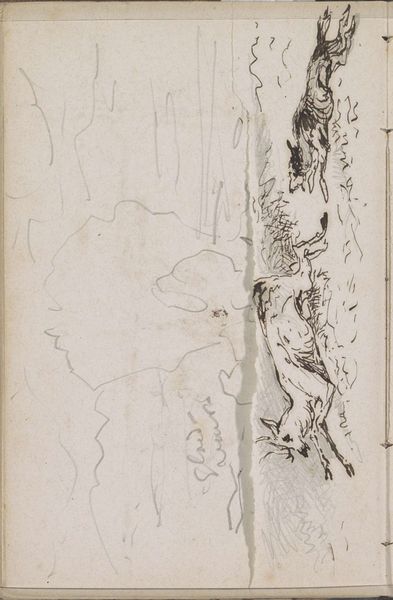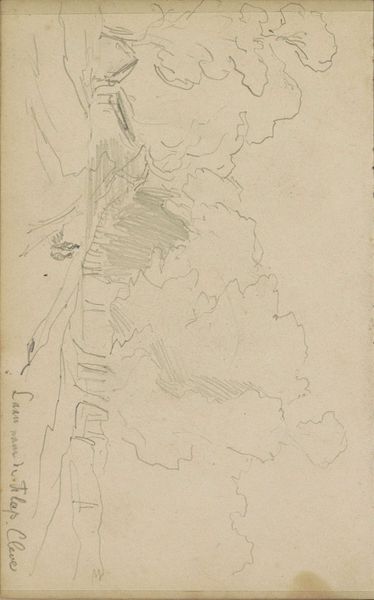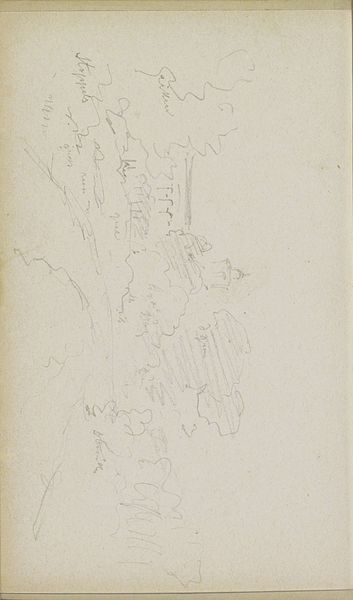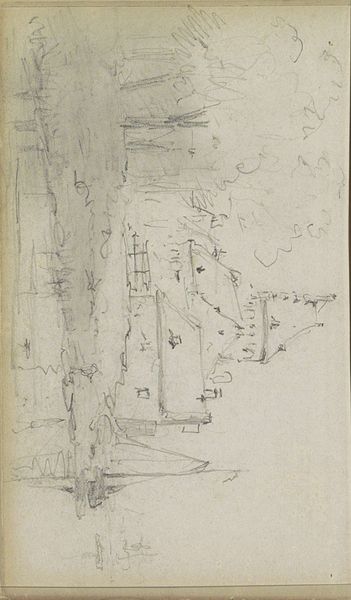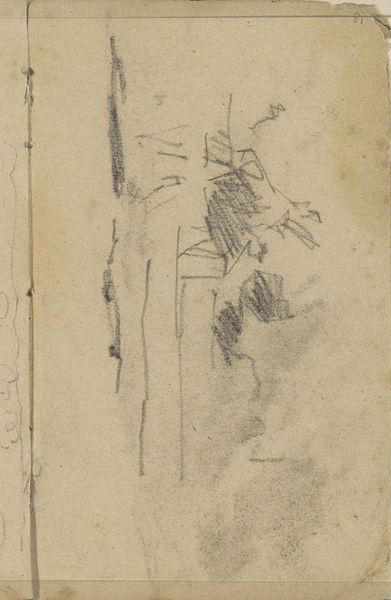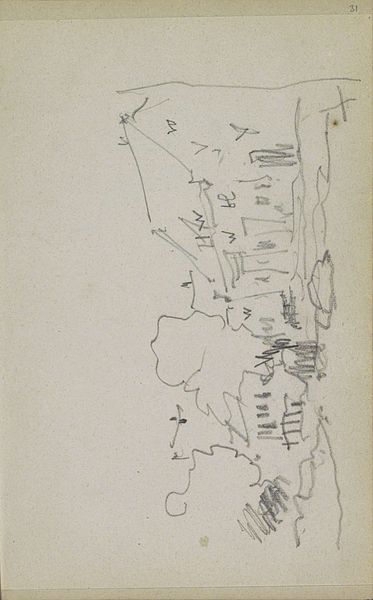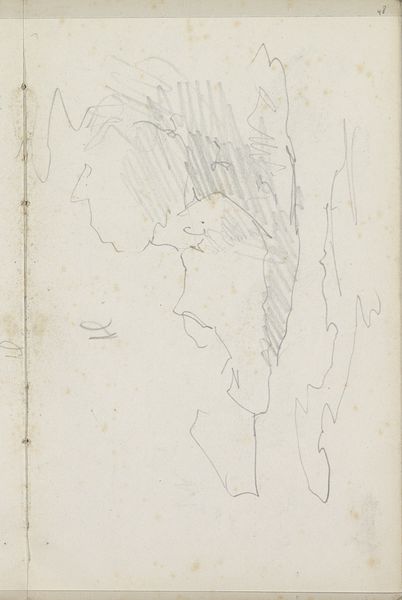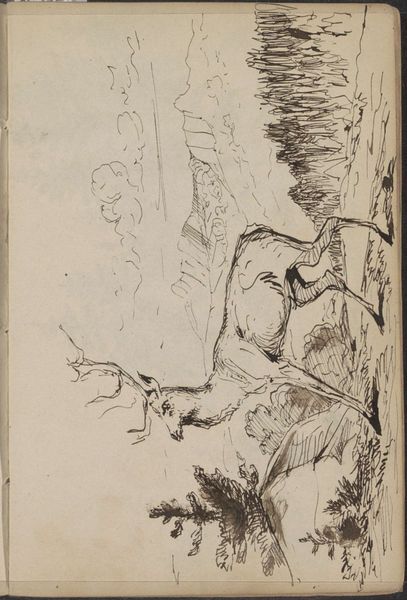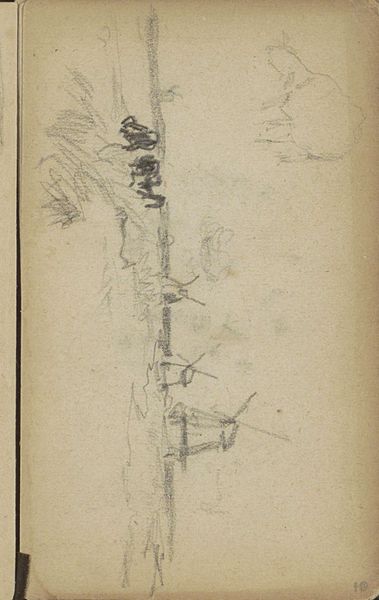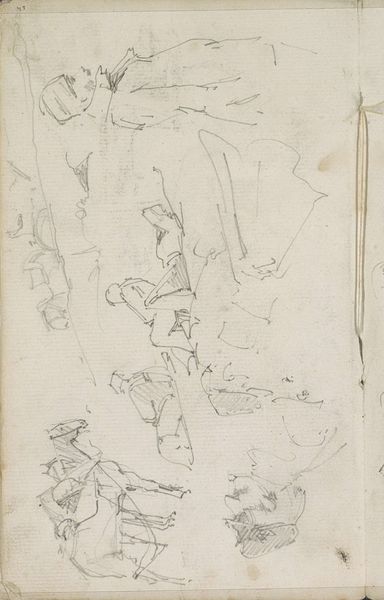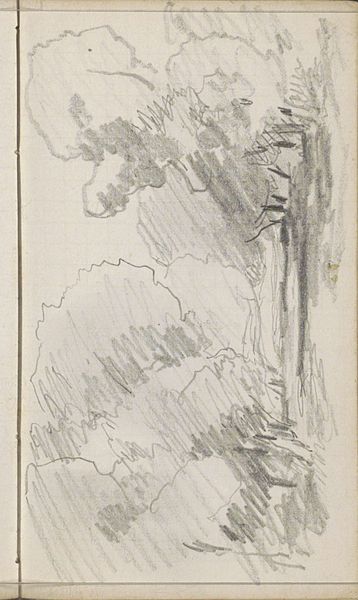
Copyright: Rijks Museum: Open Domain
Curator: Looking at "Wolkenlucht," a watercolor and pencil drawing on paper dating from around 1854 to 1868 by Johannes Tavenraat and currently housed in the Rijksmuseum, my first impression is one of transience. Editor: Absolutely. It feels very ephemeral, almost like trying to capture something that's constantly shifting. The muted colors lend to that sense, too. Curator: Tavenraat, known for his landscapes in the Romantic style, here focuses solely on the sky. I find this abandonment of the conventional earthly horizon really fascinating; it elevates the clouds into the main subject. We know from the Romantic era an elevated importance to the sublimity of nature. Editor: The sky does feature as a cultural symbol that speaks to themes of spirituality, freedom, and even destiny across many cultures. Are the varying densities of pigment symbolic as well? Curator: Possibly. We can look to similar atmospheric studies from the time by artists like Constable to see a preoccupation with capturing meteorological phenomena accurately. Beyond that literal record, the use of watercolor here creates a hazy, dreamlike effect, almost inviting the viewer to project their own feelings onto the scene. Cloud imagery, especially during this time, are almost always imbued with complex social, political, or moral commentary as the industrial revolution progressed. Editor: It really blurs the lines between scientific observation and poetic interpretation. It could suggest a sort of "divine breath" through natural formations, something both beautiful and a touch melancholic, particularly as technology changed our relationship with the natural world. Curator: That tension really epitomizes the Romantic mindset: a yearning for nature against a backdrop of accelerating change. I see it as the sky's reflection of human emotions. Editor: Yes, seeing "Wolkenlucht" offers a fascinating intersection between art, nature, and humanity's complex relationship with both. It's a testament to the emotional and intellectual climate of its time.
Comments
No comments
Be the first to comment and join the conversation on the ultimate creative platform.
